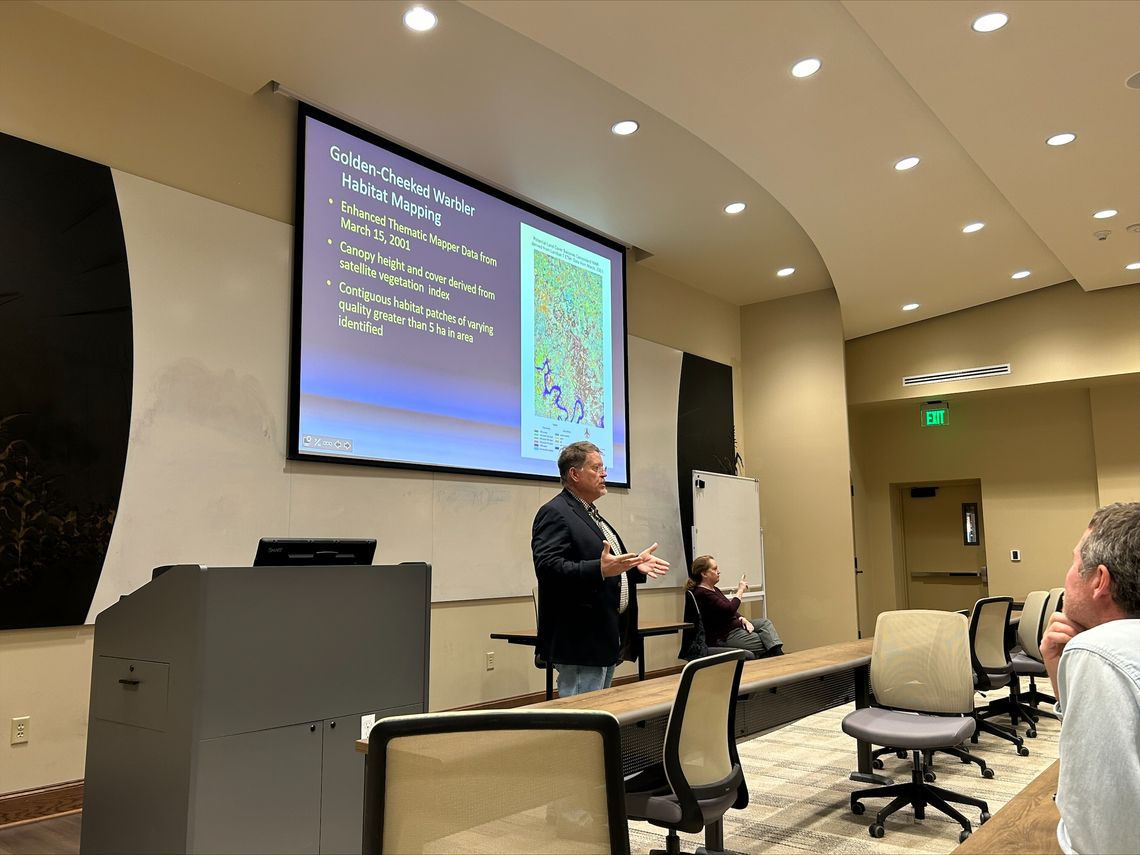BY HAELEY CARPENTER / Digital Media Director
Dr. Joseph White presented his research titled “Habitat of the Golden-cheeked Warbler: To Burn or Not to Burn” on Friday, Feb. 16 as part of the Speaker Series that the Tarleton State University College of Agriculture and Natural Resources (COANR) is hosting this semester.
White’s research and presentation proved that Golden-cheeked Warblers need a bit of human intervention to survive. Burning habitats occasionally makes a positive difference because of the healthy regrowth it provides.
Dr. White started his presentation by talking about the firebird from Slavic mythology and the nightingale from a Chinese emperor story. Both of these birds came with stories about how people wanted to own them and interfere too much, but if they did then there would be negative consequences.
“We’re trying to do good, yet we’re often faced with the issue of ‘how do we take care of, basically, wild things in an environment that maybe has some political and ecological constraints?’” Dr. White said.
White jumps into the Golden-cheeked Warbler, one of many species that has a big enough decline in numbers for it to make the endangered species list.
These birds build their nests in Ashe juniper trees, because they must have that type of bark to live in.
However, their prey, such as isopods and insects, cannot thrive in the same type of tree. They require deciduous woodlands like the Texas Red Oak.
“It’s a plant question embedded in an animal issue,” Dr. White said.
Dr. White gave five propositions, what professionals in the field think is going on and talked through the theories.
These propositions included how the canopies of juniper trees shade woodland areas, which affects how they grow. It also included how fire could affect some areas and the growing relationship between oak trees and junipers in the past century.
The focus of most of these propositions and this research is whether human interference, for example fire, is benefiting the Golden-cheeked Warbler habitat or not.
White’s research proves that if humans let the wild be wild and do its own thing, then the Golden- cheeked Warbler population will continue to diminish. If humans step in every once and a while to shake things up then we can help increase their numbers.
Habitat sustainability for the long run is key. The goal is to balance the woodlands and the junipers without too much interference like with the firebird and nightingale previously mentioned.
“Disturbance is key and very important in habitat maintenance,” Dr. White said.
Dr. White attended Texas Christian University for both his undergraduate and master’s degree before earning a doctorate in psychology from the University of Montana’s School of Forestry. He spent his postdoctoral research time in New Zealand to assess national carbon storage in indigenous forests for a climate change mitigation project.
This presentation was the first of many in the Speaker Series. To check out who is presenting next, follow COANR on Facebook and Instagram.
.png)

Comment
Comments